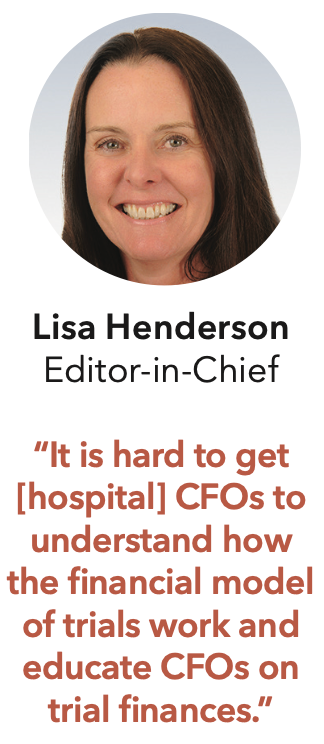A Business Case to Bridge Trials and Care
Insights from KOLs at the mid-May CRAACO event.

CRAACO, Clinical Research as a Care Option, and the event of the same name, occurred in mid-May, and was in equal measures educational and inspiring. The goal is to enable more patients access into clinical trials by being identified closer to the point of care or diagnosis. It requires bridging the very real divide between the goals of healthcare and how they operate and the same with the clinical research enterprise, which is hard work.
But that work need not be for naught. In the “Building a Business Case” session, Henry Wei, MD, head of development innovation at Regeneron, described an October 2020 published finding in the Journal of Clinical Oncology. The Yale Cancer Center examined claims for its Oncology Care Model (OCM; CMS alternative payment model), which targets the expected spending for each OCM six-month episode using historical, geographic, and clinical factors, including clinical trial participation. Using data from July 2016 to July 2018, the authors concluded that OCM episodes with trial participation outperformed non-trial episodes in achieving savings relative to CMS spending targets. These savings were attributed to lower drug costs, suggesting that clinical trial enrollment shifts costs away from CMS and toward the sponsor.
Donna O’Brien, national advisor with Manatt Health, has extensive experience as a healthcare executive. She noted in the same session that in order to close the cost and access gap between academic medical centers and community health providers, a business case, such as above, is key for hospital executives. O’Brien said, “Trials are viewed as an add on and loss leader. It is hard to get [hospital] CFOs to understand how the financial model of trials work and educate CFOs on trial finances.”
The Henry Ford Health System, which prioritized clinical trials using Manatt Health as a consultant, was featured in a CRAACO session. David Lanfear, MD, VP, clinical and translational research, described the hard work and change management needed to integrate clinical trials with clinical care. Lanfear described analyzing their own internal capabilities, making decisions on what they should outsource vs. internal expertise and processes that need to controlled closely. While some challenges still exist—a centralized CTMS that accommodates a multi-year horizon—Lanfear expressed optimism that the health system will grow well past its 200 trials a year and enable an actual “care option” as part of their clinical trials.

Behind the Buzz: Why Clinical Research Leaders Flock to SCOPE Summit
February 7th 2025In this episode, we meet with Micah Lieberman, Executive Conference Director for SCOPE Summit (Summit for Clinical Ops Executives) at Cambridge Innovation Institute. We will dive deep into the critical role of collaboration within the clinical research ecosystem. How do we bring together diverse stakeholders—sponsors, CROs, clinical trial tech innovators, suppliers, patients, sites, advocacy organizations, investors, and non-profits—to share best practices in trial design, program planning, innovation, and clinical operations? We’ll explore why it’s vital for thought leaders to step beyond their own organizations and learn from others, exchanging ideas that drive advancements in clinical research. Additionally, we’ll discuss the pivotal role of scientific conferences like SCOPE Summit in fostering these essential connections and collaborations, helping shape the future of clinical trials. Join us as we uncover how collective wisdom and cross-industry partnerships are transforming the landscape of clinical research.
Reaching Diverse Patient Populations With Personalized Treatment Methods
January 20th 2025Daejin Abidoye, head of solid tumors, oncology development, AbbVie, discusses a number of topics around diversity in clinical research including industry’s greatest challenges in reaching diverse patient populations, personalized treatment methods, recruitment strategies, and more.